
Cumathamnion decipiens
Winged Rib
On-site interaction:
26 February 2022
French Beach, Juan de Fuca Strait, B.C., Canada.
Tide: 1.3 feet at 5:27pm PST (measured at Sheringham Point Tidal Station)
Conditions: Low overcast, light rain, wind variable 5 to 10 km/hr, sea rippled, humidity 93%, 5˚C.
Moon: Waning Crescent (19%, day 26); Previous Phase, Third Quarter, 23 Feb 2022 at 2:32pm PST: Next Phase, New Moon, 2 Mar 2022 at 9:34am PST.
Note: We interacted with this seaweed on site, and due to the uncomfortable weather, travel distances and time of day we started compiling our notes the next morning at home.
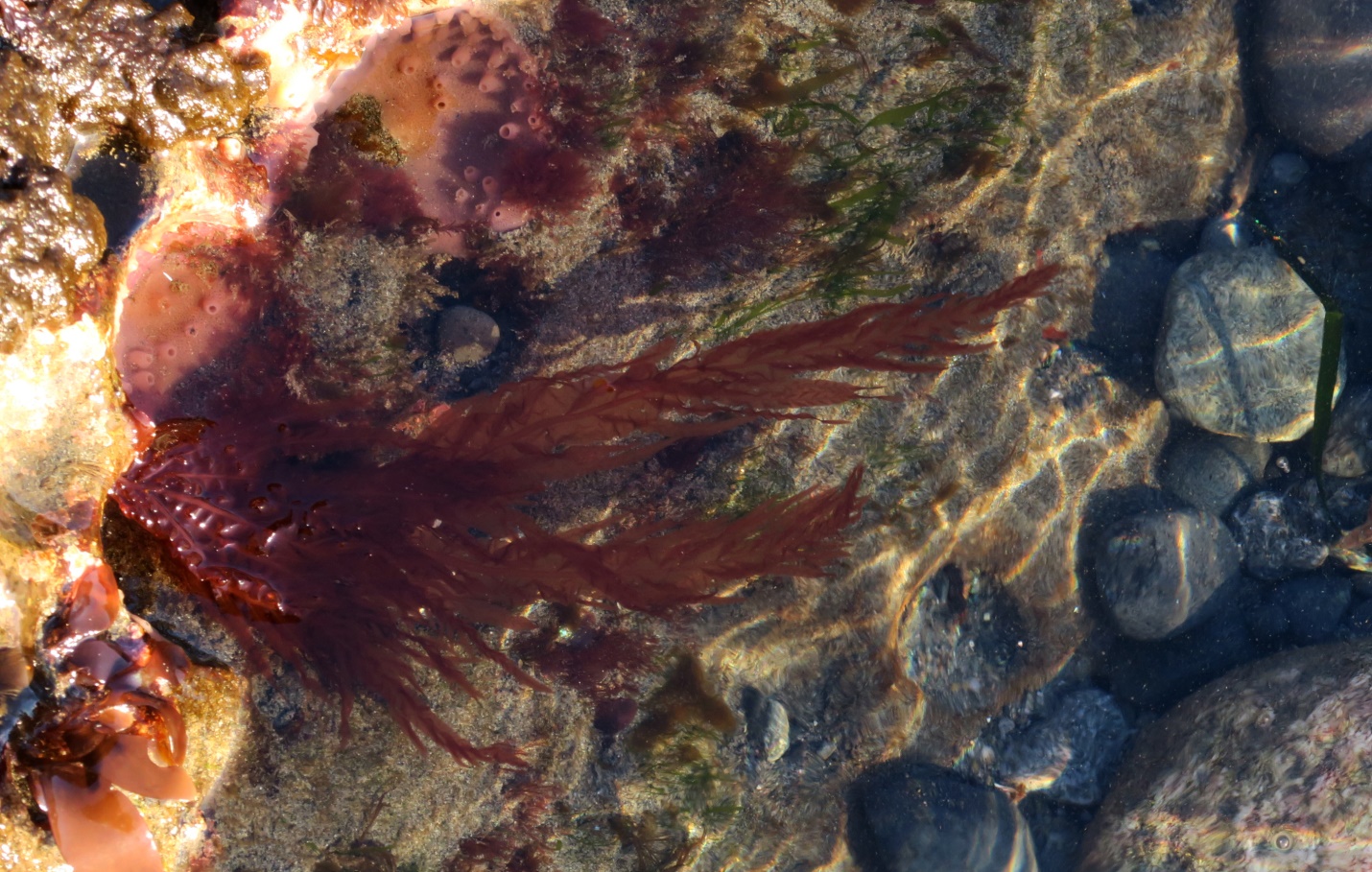
Figure 1: Cumathamnion decipiens, swishing out from its holdfast in response to the pull of the gentle ocean swells; French Beach, Juan de Fuca Strait, BC, Canada. February 12, 2022. Photo ID: 27107 ©Seaweedwhisperings.com
Person 1:
Swish.
Graceful movements in water.
Confident in its grace.
Has a strong foundation (attachment) & a prominent mid-rib.
Not worried.
Not boastful.
Commands attention.
Feathery? I considered describing Cumathamnion as feathery, but it didn’t seem quite right. To me, feathery has a connotation of light and easy. I feel that this seaweed is not that, but much more synchronized and with that comes also the impression of elegance.
Some parts near the holdfast bleach to orange. I think this happens just before they break off. A few individuals had only the holdfast and 1-3 cm of orange-colored thallus remaining, with no trace of red showing in the orange.
Multiple overlapping stems arise in a cluster, seemingly interacting well together. In water they swish gracefully, out of water, they lie contentedly together.
I wonder if support of their group is important. If the group begins to be stressed, perhaps they all disintegrate quickly.
I sense that Cumathamnion doesn’t have the staying power or interest in completing anything. Simply likes to dance and flirt, but not ready to commit to anything.
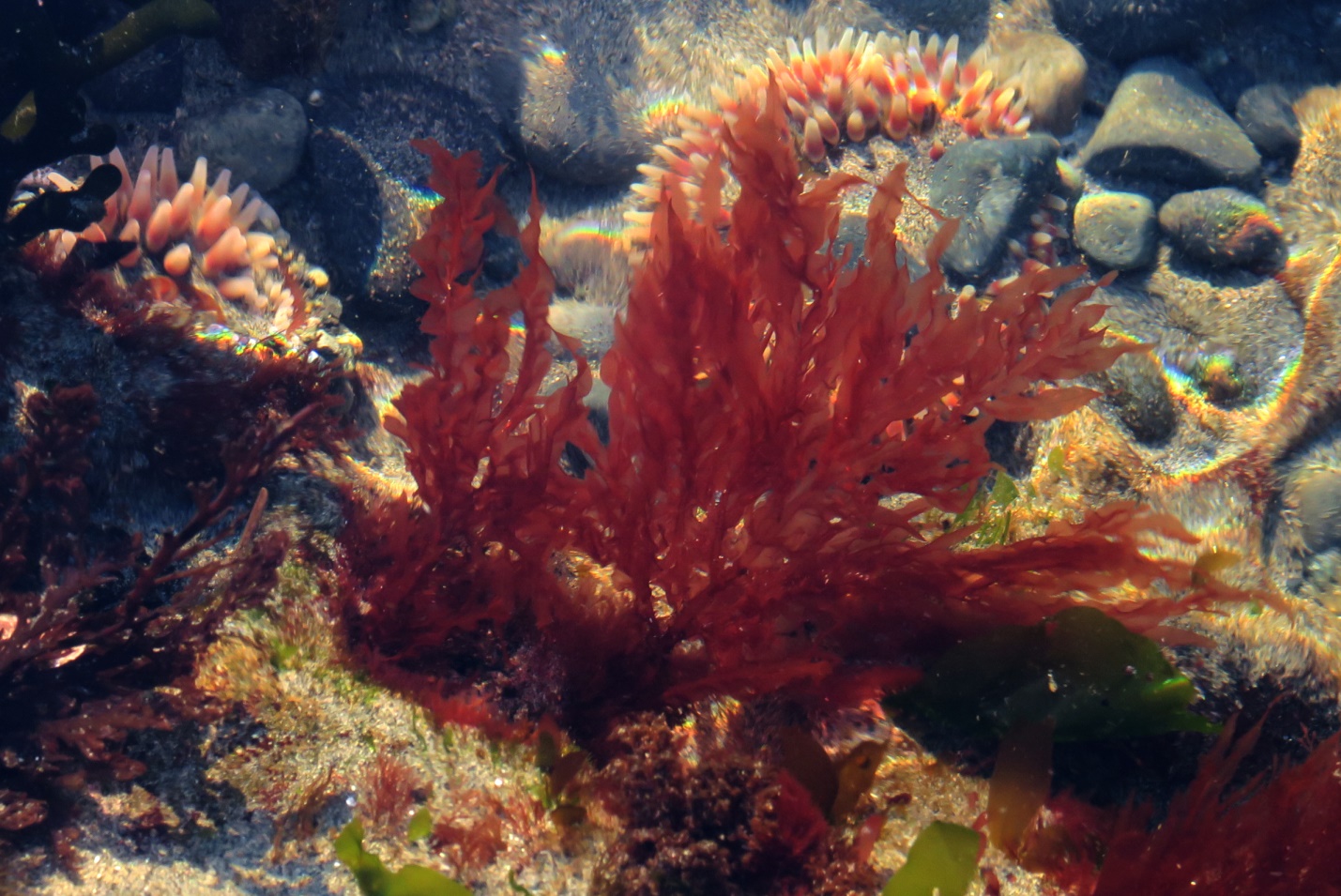
Figure 2: Delicate Cumathamnion fronds wafting underwater. French Beach, Juan de Fuca Strait, BC, Canada. February 12, 2022. Photo ID: 27108 ©Seaweedwhisperings.com
Person 2:
Delicate
Looks “light as a feather”
Feathery appearance/shape to some parts
Layered
Gentle red with depths of intensity
Gently ruffled look
Many stems, branches, always in motion with the surfs action, no matter how gentle it may be.
Long blades with a definite mid-rib.
Blades ruffled gently and very thin, nearly transparent.
Along the mid rib, there are areas of deeper color, where the red is more intense.
If you can catch a moment when this seaweed is not in motion, you can distinguish tiny little branches, long thin lance shaped branchlets that arise at intervals (not regular to my eye, but with a pleasing pattern) from either side of the main mid-rib and they rest atop the sides of the main blade. It’s a surprise almost to see these little branches because when in motion, they tend to fold alongside, as if one, with the main thallus (this creates the more intense red coloration). And if you can examine them even further, you can see that they are miniatures of the main thallus – they have a mid-rib and a very thin blade to either side and begin and end with a tapered tip.
A very graceful shape, these bladelets have, this seaweed has.
Many thalli arise from one area of the cobble that you are growing from; I see this is the same when I find other clusters of you growing nearby. Are you all one plant arising from a common holdfast? I think so.
As I watch you, in the gently receding surf, your motion is so fluid…, it’s like you are one with the water, or possibly actually ‘riding’ the current of the water like a hang-glider rides air currents. Your motion and position is directly related to the water, yet it is also ‘more than’ the motion of the water.
The motion of your thalli is a bit mesmerizing. Your thalli are no longer than about 20cm (this individual) and since they are all anchored to one similar point, when they move it is in an undulating pattern. Your multiple red stems slip and glide over each other; there’s not a hint of any tangling happening, so, indeed, very fluid motion.
When I think of this I am reminded of the ‘feathered serpent’ Quetzalcoatl from the myths, lore and culture of the ancient Aztecs [this god is one shared by many Mesoamerican cultures]. You are both undulating – serpentine in movement, and feathered – with your delicate red ruffles and gracefully tapered branchlets.
In water you have this graceful, fluid movement; out of water you rest limply, not in a tangle of stems, but in a clump of almost corrugated rippled red tissue. This mass is not easily even noticed, other than for its general color, and maybe it is one of your defenses – a camouflage of sorts? When not in motion you are invisible; when in motion, you are notable.
In water, your movement has a seductive quality to it; to some I think it would be enticing. And what would you be engaging in, those who are enticed to interact? I think it is the dance, the courtship, the prologue before any mating. What just now came to mind is the elaborate dances of some of the world’s cranes (family Gruidae) – long necks, beautifully feathered wings and long legs that step to their instinctual courtship rhythm, yes, Cumathamnion decipiens, you have these qualities.
So it is the potential that motivates you…, what might be…, that which is being offered up to see if there is a suitable (hmm, suitable reminds me of ‘suitor’) response. This energy enlivens you, Cumathamnion. You love to be engaged in looking for your mate. Beyond this, though, the commitment and the day to day building of a solid thing… such as making a nest, feeding, protecting and raising young chicks…, I don’t feel that you have that staying power yet, or it is certainly not where you are most interested and invested.
Like Quetzalcoatl, he brings the rain, which nudges the seeds from their slumber, to germinate into crops that one day will yield food and fruit. There is much that follows this original “rain” including the necessary light and soil nutrients and temperatures, AND the rain itself is essential. This feels like the energy of this seaweed, it’s a very beautiful start…, and within that flows the message that the story has only just begun.
Overlapping thalli, layering of branchlets over previous branches. Overlap and layer…, can you find it tricky, Cumathamnion, to ‘know’ all the layers underneath? Do you glide over so easily that you find it difficult to identify and place these other elements/aspects of yourself? I sense that the ease with which you slip over and glide on past has a bit of a price. Yes, you don’t tangle up, you don’t seem to engage in external conflict much at all, but then how do others see what is really you? Do you always feel only as the others of your group do? Or, do you ‘keep the peace’ but also keep your own opinion in reserve?
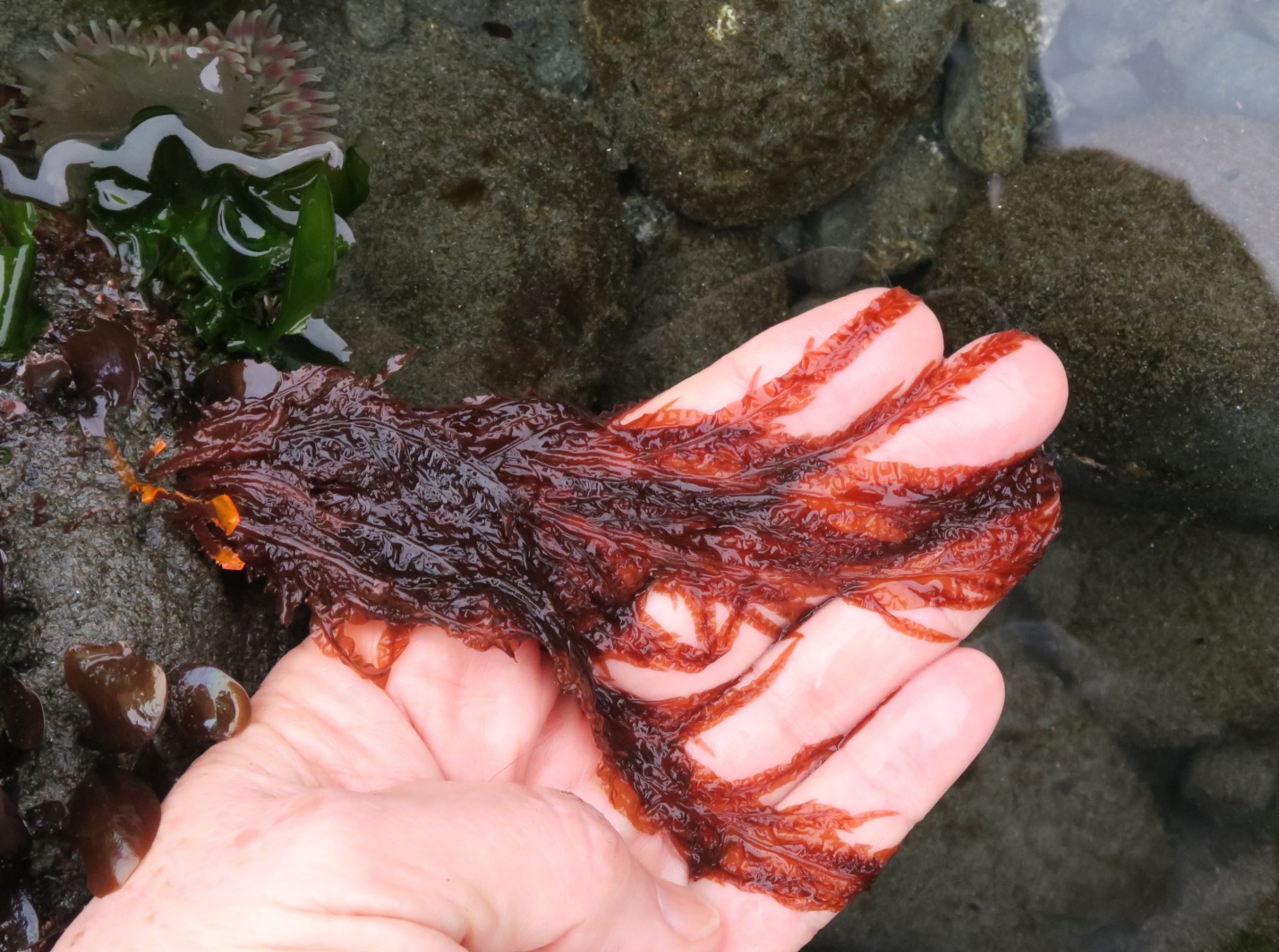
Figure 3: Cumathamnion decipiens ‘in hand’. French Beach, Juan de Fuca Strait, BC, Canada. February 26, 2022. Photo ID: 27109 ©Seaweedwhisperings.com
Person 3:
The
energy of this seaweed embodies hope and a way forward in what feel
like uncertain circumstances.
Yet there is still a fear of
making mistakes, being shown to be a fool, being laughed at and
humiliated - blushing with mortification (seaweed turns bright orange
and breaks off).
Can you convince others to let go of
their hesitation and join you in this dance of beautiful possibility
supported by the nourishing flow of ideas in your
surroundings
In that dance you may lose your ability to engage
rational thought and dreams and fantasies may take over.
Do you
have to dig deep to be present in this vulnerability? Or are you
certain that there are safe places to make mistakes and try out new
things?
Can you embrace this uncertainty in the knowledge that a ‘swish’ can restore balance?
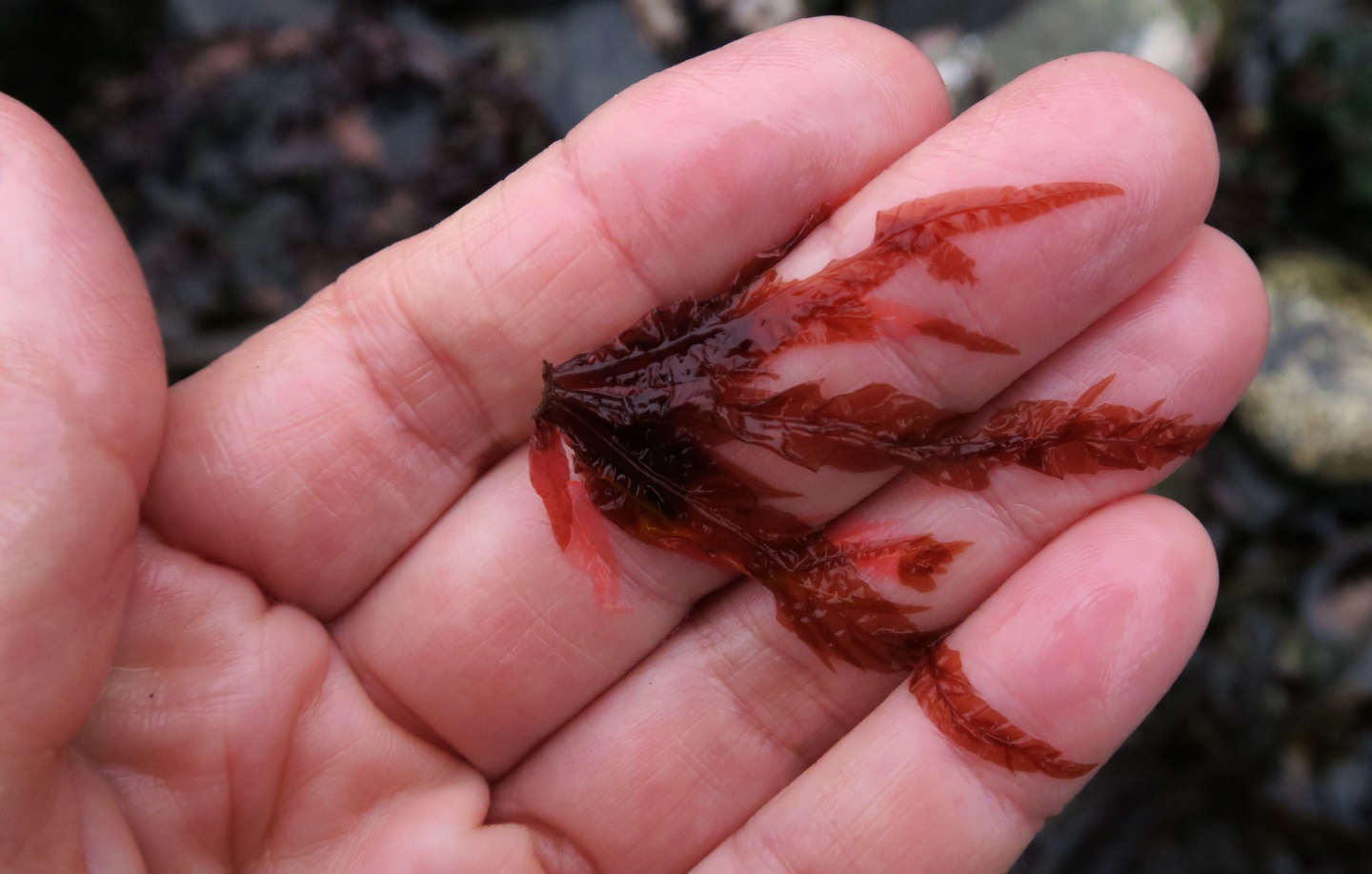
Figure 4: In hand, a broken piece of Winged Rib, French Beach, Juan de Fuca Strait, BC, Canada. February 26, 2022. Photo ID: 27110 ©Seaweedwhisperings.com
Person 2, Second Interaction:
At the mere suggestion of water action, Cumathamnion, you’re in motion, moving with it...
You do well by “going with”, by sliding and gliding over… with no attempt to resist or even slow down a force/influence that is impacting you.
What does that give you?
Ooooh, the feeling of flying..., perhaps more so gliding which is effortless in comparison to active flight.
And what does flying/gliding/flight give?
Ah, pleasure and maybe a thrill, and then maybe also a sense of being separate from but also harnessing a more powerful force, perhaps also moving over and desiring to move beyond it, too…, if only you could have enough strength and stamina.
Ah, but stamina is not your strong suit. So, you must stay linked with that greater force, “the wind beneath your wings”. Yes, they are your “wings”, but not it is not your “wind”.
So there is a partnership necessary in this. A partnership not of equals but more like a merging of very different qualities towards some end – an end that would be impossible without that coupling, union, combination.
If you are not in healthy balance with yourself, Cumathamnion, a partnering or coupling such as this could bring difficulties. It is possible for you to be dominated by the qualities of the ‘other force’ you partner with, especially if you cannot hold strong to your own ways. Delicate looking, going with, and gliding along, modifying your movements with the slightest hint of change…, these qualities can be easily subverted and you then forget your own beauty and grace. Sometimes, I think, parts of you are even damaged irreparably. Broken off in shame and humiliation.
Are you good at dreaming? At conceiving plans and ideas galore?
Yes.
And, putting those plans into tangible form, well, that can be where you struggle.
If conditions get too harsh, you “blush” with embarrassment (just as the seaweed turns color from red to striking fluorescent orange) and the shame of it weakens you. You break off there, at the site of your weakness, and that dream/plan/idea can be lost to you forever.
Discussion:
There can be imbalances experienced or the dipping a bit too far into one extreme, but with a swish, or an undulation, that has Cumathamnion moving back in the opposite direction, and there is a chance for the rational and intuitive, passion and reason, reality and dreams to balance out again.
Person 2 recalls how it can be ‘surprising’ to see Cumathamnion’s graceful side branchlets. They are not always or easily observable. When the water stills, the branches drift out into their positions, and they create a kind of ladder, pegs hammered up the trunk of a tree, a way to advance out along the mid-rib. When the water is active, these branches fold in and ‘disappear’.
Now, in reviewing these themes, I recall a board game that I used to play in my childhood that was then called “Snakes and Ladders”. If you rolled the dice and landed on a ladder, you got to progress forward many steps in one move, but if you landed on a snake you slid backwards many places. I think Cumanthamnion decipiens is like this; their energy can have surprising strength and forward momentum, and then they also, and quite suddenly, can lose that. Vulnerabilities may be exposed or the support of their group is somehow not evident, and with a single swish things are back at the starting point.
The “decipiens” species name gives a clue to part of the energy here; without any knowledge of Latin or Greek origins taken into account, simply taken in the English language this name has a rough similarity to “deceit” or “deceitful”. And it could look like a deception, a trickery or a duplicity, certain aspects of the Cumathamnion energy. Possibly it is no duplicity at all, just simply a young energy learning the personal strength to hold opposites in balance.
It is also possible this deception theme comes about from aspects/concepts/communications being evaluated from outside their own paradigm. There is ‘real and true’ passion, dreams and intuitive knowing, and there is also ‘real and true’ reason and rational evaluation. Seen without awareness of context and paradigm, a dream could look deceitful (certainly could give a conflicting picture), and also rational evaluation could, too.
So this can contribute to genuine hesitation in speaking one’s ‘truth’ as the life experience of being accepted for this often has been very uncommon. Understanding for oneself the paradigm from which you are working from brings the real beginnings of the courage to speak one’s truth plainly and clearly. The need to remain silent and the frustration of being misunderstood and misinterpreted is eased. Yes, Cumathamnion, you will always have the ability to quickly “swish” back in the other direction and neatly avoid being ‘pinned down’ in one place, but if it serves you speak for yourself, you know that in yourself you must first identify where on that continuum of ‘reality’ you are speaking from.
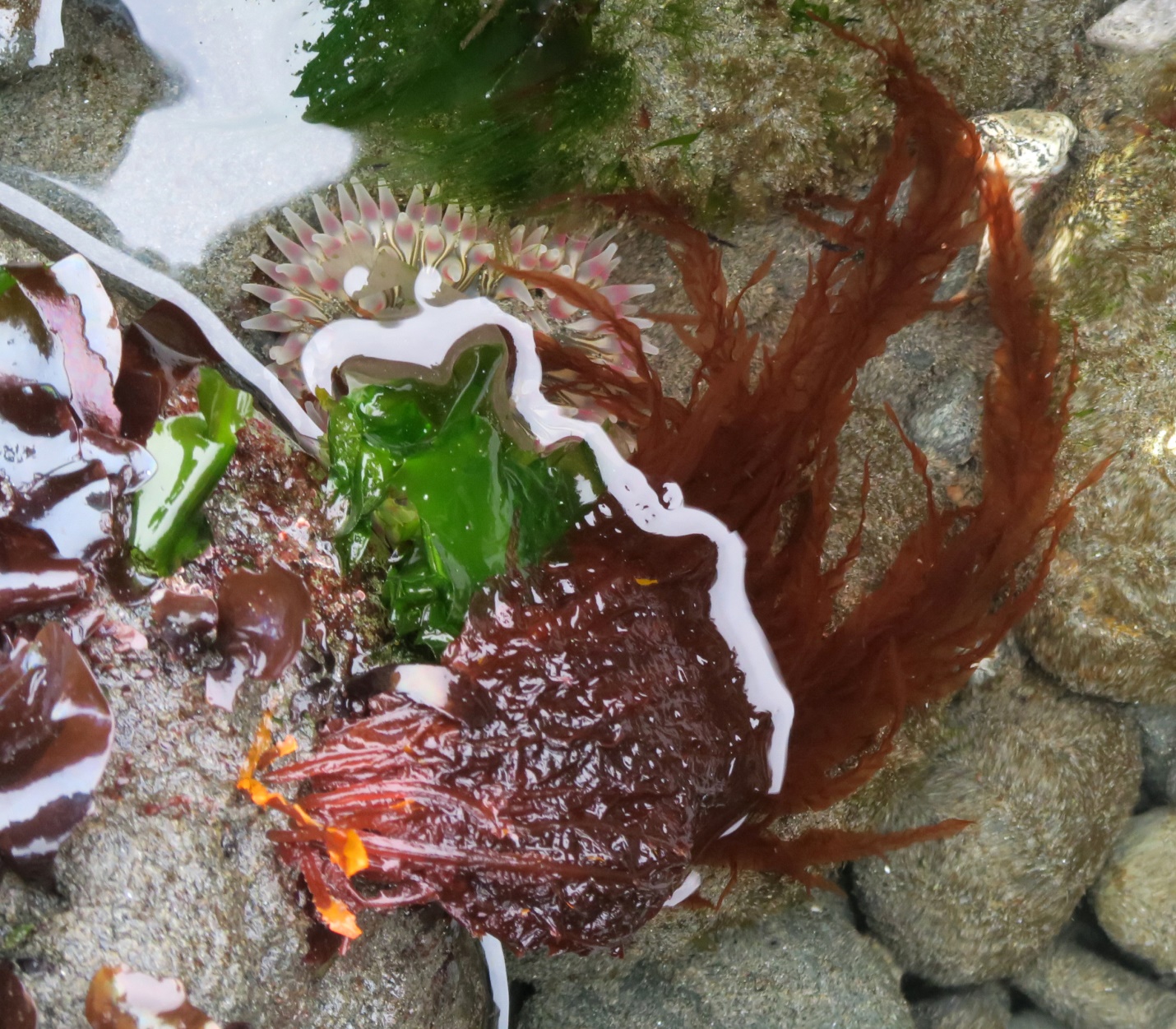
Figure 5: Cumathamnion decipiens half in / half out of water as the tide recedes. At the holdfast area bright orange fragments are visible where thalli have broken off. Underwater, the crinkled red mass transforms into a graceful sweep of delicate algae. French Beach, Juan de Fuca Strait, BC, Canada. February 26, 2022. Photo ID: 27111 ©Seaweedwhisperings.com
Biology & Natural History Information:
Description:
The thallus of this delicate red algae is usually reddish-pink to light pink but can also look purplish red. The blade, which may reach up to 50cm in length (though often is only about half that) is about 15 mm wide, has a prominent midrib, and the branching pattern is alternate. An unusual and distinguishing feature is the presence of small ‘leaflets’ that arise directly from the midrib and overlay the delicate blade. The common name, Winged Rib, arises from this feature and this type of branching pattern repeats at each new branching level. A short stipe attaches to the substrate with a small discoidal holdfast.
Habitat:
Cumathamnion decipiens is common on rocks, and is often found on the underside of overhanging rock shelfs or boulders. It lives in the low intertidal and subtidal zone. This ephemeral annual is only visible in the spring.
Pacific Coast Distribution:
Aleutian Islands and Prince William Sound, Alaska to San Luis Obispo County, California.
Remarks:
This red alga has an isomorphic alternation of generations, and interstingly the gamete-bearing and spore-bearing generations look identical. Male and female gametophytes occur as separate individuals.
Classification:
Phylum: Rhodophyta
Class: Florideophyceae
Order: Ceramiales
Family: Delesseriaceae
Subfamily: Dellesserioideae
Tribe: Delesserieae
Genus: Cumathamnion
Species: Cumathamnion decipiens (J.Agardh) M.J.Wynne & G.W.Saunders 2012
Previous Name: Delesseria decipiens J. Agardh
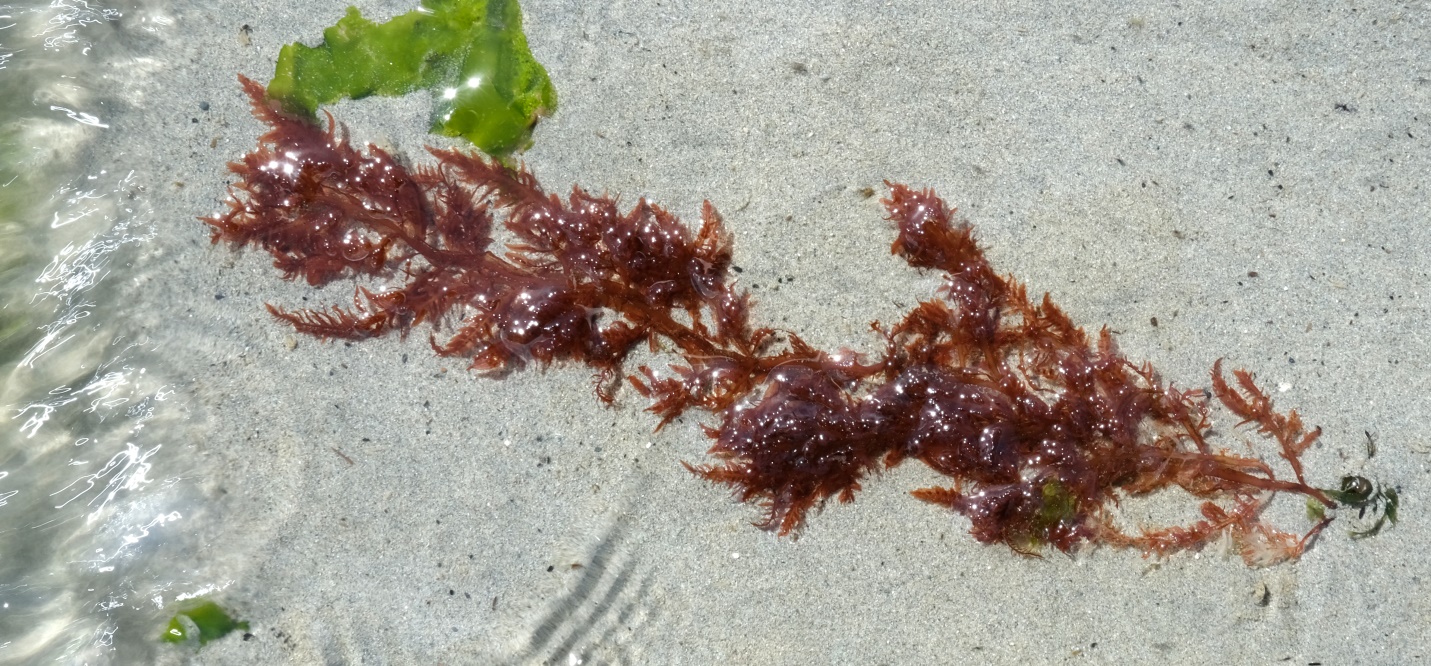
Figure 6: It was a surprise to find Cumathamnion decipiens here in this atypical habitat. The holdfast is anchored to a cobble which is fully buried by the sand. Gonzales Bay, Juan de Fuca Strait, BC, Canada. April 22, 2022. Photo ID: 27134 ©Seaweedwhisperings.com
![]()